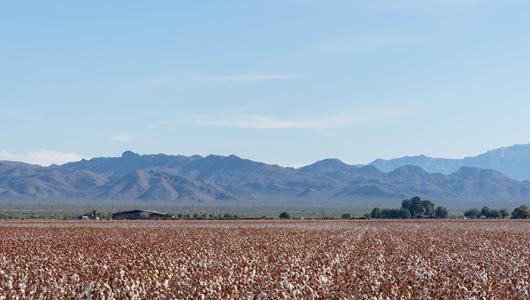Hey all, this is Sammy Soil bringing you the halftime report!
In the first half we learned about the importance of developing a solid conservation game plan. Experts from USDA’s Natural Resources Conservation Service will huddle with you to develop the right plan for your land and your field goals.

And part of that plan will certainly involve recruiting a winning team. With star players like cover crops, earthworms, pollinators and microbes, you’ll be racking up field goals like never before and well on your way to a championship season.
Now that we’ve reached halftime, let’s take a break from the action and check in with one of our soil health experts Jamie Patton from Wisconsin to see what adjustments can be made and if there are any new plays we should be adding to the game plan for the homestretch.

Sammy: Jamie, thank you for joining us! As farmers implement their game plan, what should they be watching to make sure they are accomplishing their field goals?
Answer: Thanks for the half-time invite, Sammy! Anytime farmers try a new conservation play, it’s important they keep their eye on the ball. What I mean is, farmers should literally use their powers of observation to monitor the impact of conservation practices on soil, crops and local biology. For example, does the soil stay in place during intense rain and wind events? Does water soak into the soil with no ponding, erosion or runoff? If so, then chalk up points for the home team!
Along with the soil, farmers also want to monitor their crop, insect and microbial players. Are the crops healthy and taking advantage of the entire soil profile to capture water and nutrients? How many types of beneficial organisms are found in the field? Are these organisms playing to their full potential? If the crops and local biology aren’t performing to expectations, farmers may need to adjust or add to their conservation playbook, mid or post-season, to bolster their offense.
Sammy: If they see problems arising, what resources are available to help them make halftime adjustments and come out strong in the second half?
Answer: Local NRCS conservationists can help farmers identify resource concerns and adapt and implement conservation practices to reach farm goals. They can also connect farmers with Extension specialists, certified crop advisors and other industry professionals with practical knowledge and experience to help tweak conservation strategies mid-game and put points on the board.
Farming is a business. Therefore, financial and risk management strategies are a part of every good conservation plan. Farmers may be able to access financial support through NRCS, USDA’s Farm Service Agency or local programs to put their conservation plays into action. Additionally, participating in federal crop and/or livestock insurance programs can offer farmers additional financial piece of mind, particularly as they start their journeys to building soil health and resiliency to weather extremes.
Sammy: Sometimes, adding a new wrinkle to the playbook can really take the game plan to the next level. What plays have you seen help farmers build championship level soils on their fields and accomplish their field goals?
Answer: We all know the journey to improved soil health is through the four soil health principles - minimizing soil disturbance, maximizing diversity, maximizing soil cover and maximizing living roots. Stacking conservation practices is a great way to supercharge a farm’s offense. Where one conservation practice is good, two or three practices are often better! Combining no-till with multispecies cover crops is a great way to meet all four soil health principles, but why stop there? For example, farmers can enhance their playbook by diversifying crop rotations, such as adding a small grain to a corn-soybean rotation to increase opportunities for soil cover and living roots; utilizing livestock to graze cover crops to integrate diverse nutrient sources; or planting green to improve herbicide resistant weed control and reduce chemical disturbances. There are so many conservation options, farmers are sure to find the right combination to take their farm and fields all the way to the “big game!”

Sammy: Halftime is almost over. Thank you for joining us to break down the first half and look ahead. Any inspiring words for the team as they prepare to take the field and implement the adjustments and new plays on their way to accomplishing their field goals?
Answer: Ok, Sammy, I’m from Wisconsin. Therefore, I feel obligated to leave you with a Vince Lombardi quote: “We would accomplish many more things if we did not think of them as impossible.” Working across the Midwest, I know it is possible to farm profitably and sustainably while improving our soil and water resources. With the right team to help identify the right plays and maybe more importantly, maintain the right mindset, farms are sure to achieve the conservation win!
For more information on how NRCS, Farm Service Agency (FSA) and Risk Management Agency (RMA) can help you make halftime adjustments on your way to a championship season, contact your local service enter by visiting farmers.gov/service-locator.


